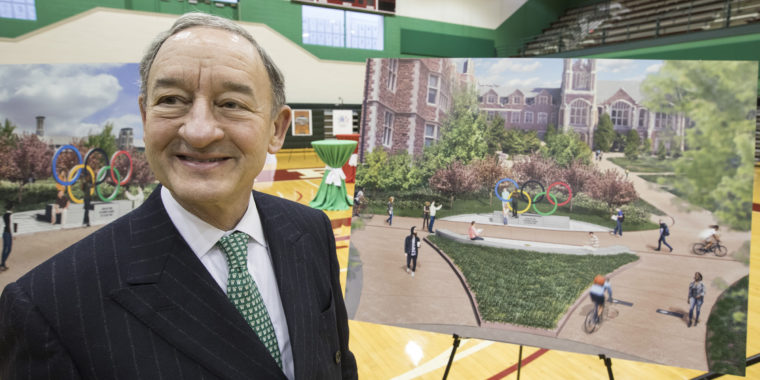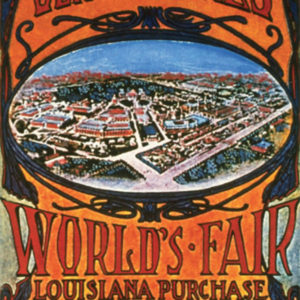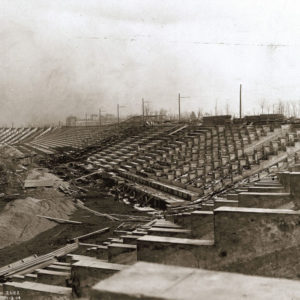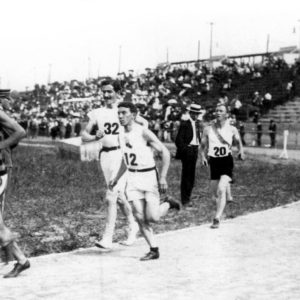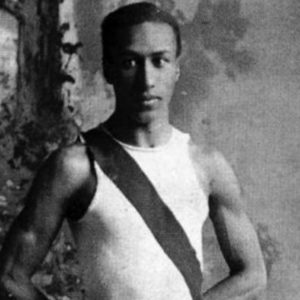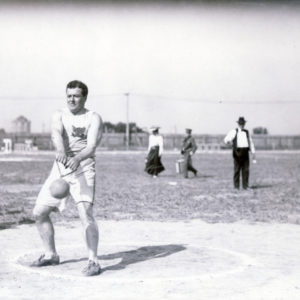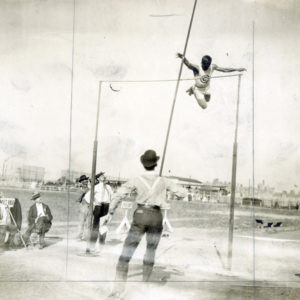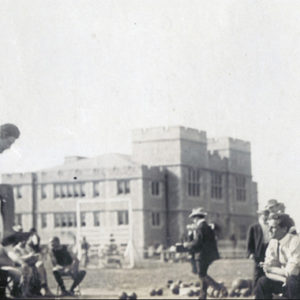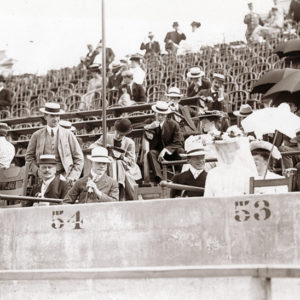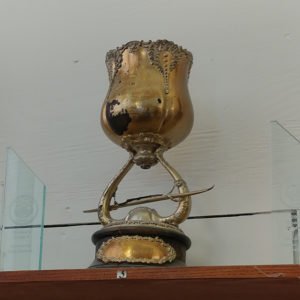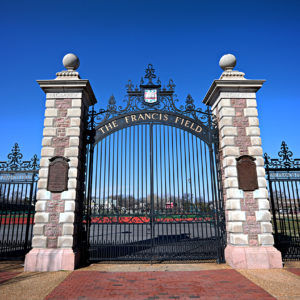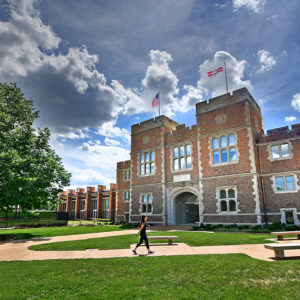Washington University in St. Louis will add another architectural jewel to its historic campus later this year when an Olympic Rings “Spectacular,” a five-ring sculpture, is installed at the end of Olympian Way, on the southwest corner of the Danforth Campus.
The sculpture will commemorate the 1904 Olympic Games, held in facilities built on the Danforth Campus still in use, wholly or partially, today. That includes the stadium that is now Francis Field and the first-ever gymnasium built for the Olympic Games, which is now part of the Gary M. Sumers Recreation Center.

“The 1904 Olympics are forever tied to the history of St. Louis and Washington University, and I am very pleased that there will now be a beautiful and permanent tangible reminder on our campus of these historic games,” Chancellor Mark S. Wrighton said. “This memorial to the games will no doubt become a favorite meeting space on campus, and I am sure that ‘meet me at the rings’ will quickly become part of the Washington University vocabulary.
“We could not be more proud to be the home of this important new reminder of St. Louis’ Olympic legacy.”
A rendering of the sculpture was unveiled Feb. 5 at a news conference in the Washington University Field House sponsored by the St. Louis Sports Commission, which announced a series of initiatives reigniting the region’s Olympic legacy and the formation of the St. Louis Olympic Legacy Committee to lead the effort. “This isn’t about who we were, but who we are and who we can be,” said Frank Viverito, president of the St. Louis Sports Commission.
The legacy committee, chaired by Michael Loynd, a 1999 graduate of Washington University School of Law, has been working with the International Olympic Committee to initiate a multiphase project — including the design of the sculpture — celebrating St. Louis’ contributions to the Olympic movement as host of the 1904 Olympic Games.
Other signs or markers commemorating the games will be placed in Forest Park, at Creve Coeur Lake in west St. Louis County, and along the marathon route that snaked its way throughout roads in the near north and west St. Louis County neighborhoods. The committee also will focus on future opportunities for St. Louis to engage and participate in Olympic events.
“We are one of only three cities in the U.S. — one of only 23 in the world — to host the Summer Games,” Loynd said. “We were the first Olympic City in America and the birthplace of the Olympic gold medal. We started the tradition of awarding gold, silver and bronze medals for first, second and third place.
“Every time you see someone accept a gold medal, that is St. Louis,” Loynd said. “That is our contribution. Yet we’ve never properly embraced our status as an Olympic host city. Every two years, for 16 days, the Olympics are the biggest thing on the planet — and we’re part of that.
“These were significant games,” Loynd said. “They should be in our DNA.”
Joining Loynd and Viverito on the St. Louis Olympic Legacy Committee are:
- Jackie Joyner-Kersee, six-time Olympic medalist and world-record holder who was named Sports Illustrated’s Greatest Female Athlete of the 20th Century. Joyner-Kersee also was awarded an honorary degree from Washington University in 1992;
- Bob Costas, Hall of Fame broadcaster and host of 12 Olympic Games from 1992-2016;
- Shad Schoenke, a local marketing professional and civic booster who helped develop the vision, content and creative for the Olympic Legacy Project; and
- Marc Schreiber, vice president of the Sports Commission.
“It’s exciting to help revive this interest in the Olympics,” Wrighton said. “We have Olympians with us, people who have demonstrated a commitment to excellence. We share that commitment in our academic and athletic programs. Striving for excellence is a part of what we are doing.”
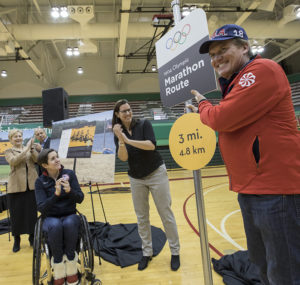
Also on hand were 12 Olympic athletes with local ties, athletes who, Wrighton noted, “have demonstrated incredible athletic achievement.”
In addition to Joyner-Kersee, who won six Olympic medals (three gold, one silver and two bronze) and participated in four Olympic Games ( 1984 Los Angeles; 1988 Seoul, 1992 Barcelona and 1996 Atlanta), Washington University head softball coach Michelle Venturella, who won a gold medal with the 2000 Olympic softball team in Sydney, Australia, was present for the announcement, as was the School of Medicine’s Kerri Morgan, assistant professor of occupational therapy. Morgan participated in the Paralympic Games in 2008, 2012 and 2016.
Other Olympians were Jim Campbell (hockey, 1994 Lillehammer); John Carenza (soccer, 1972 Munich); Lori Chalupny (soccer, 2008 Beijing); Jim Chapin (speedskating, 1976 Innsbruck, ’80 Lake Placid, ’84 Sarajevo); Brendan Eppert (speedskating, 1994 Lillehammer); Sarah Haskins (triathlon, 2008 Beijing); Ty Keough (soccer, 1980); Stacy Smith (ice dancing, 1980 Lake Placid); Craig Virgin (distance running, 1976 Montreal, 1980, ’84 Los Angeles).
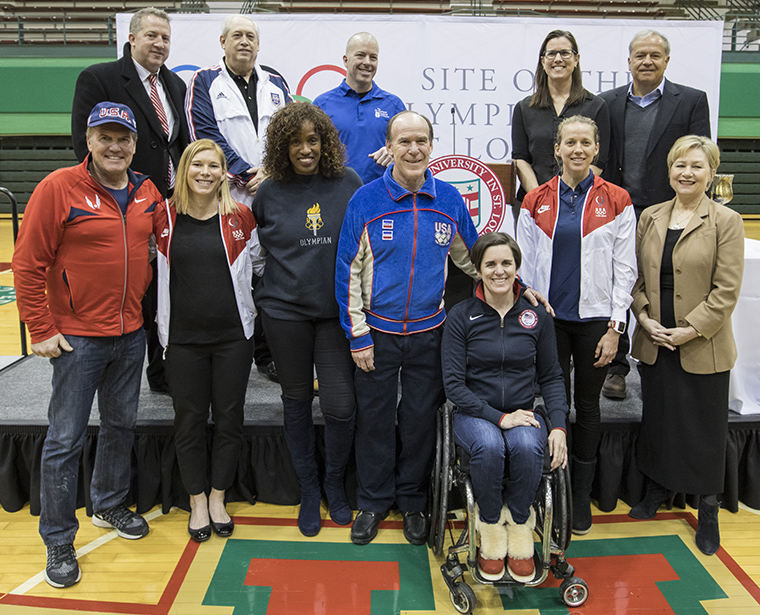
About Washington University’s Olympic legacy
St. Louis was the first city to build new state-of-the-art athletic facilities for the Olympic Games, and those facilities, the Olympic stadium and the Olympic gymnasium, became an important part of the Washington University campus after the Olympics were over.
The Olympic gymnasium, built in 1903, hosted fencing, the inaugural Olympic boxing competition and the debut of Olympic basketball as a demonstration sport.
After the Olympics, the gymnasium was turned over to Washington University’s Athletics Department and named Francis Gymnasium for David R. Francis, who was president of the 1904 St. Louis World’s Fair and 1904 Olympics and a Washington University alumnus.
The gymnasium underwent a major renovation in 2016 and is now the Gary M. Sumers Recreation Center. An earlier expansion to the original structure has been the site of four U.S. presidential debates, in 1992, 2000, 2004 and 2016, and a vice presidential debate in 2008.
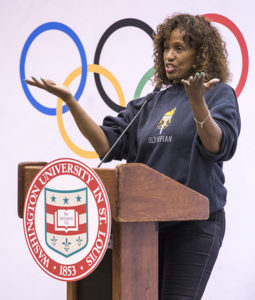
The Olympic stadium, which was later named Francis Field, held the opening ceremonies as well as all field events at the 1904 Olympics.
At the time of its construction in 1902, it had a capacity of 19,000 and was the largest all-concrete structure in the world, as well as the first concrete stadium in the U.S.
Following the Olympics, it became home to the Washington University Bears football team, with the first football game played in September 1905 — a 59-0 Washington University victory over Westminster College.
Francis Field, now also home to Bears soccer and track-and-field teams, was the site of the 1986 AAU/USA National Junior Olympic Games.
In 1994, Francis Field served as a centerpiece for the 10-day U.S. Olympic Festival as 3,000 athletes were housed on the Danforth Campus for the country’s top amateur sporting event. The famed Olympic torch was lit inside the Francis Field gates during the 1994 festival, and 10 years later again visited the historic playing field as part of the 2004 Olympic Global Torch Relay.
Both Francis Field and the gymnasium are registered historic landmarks; and both venues are the oldest modern-day Olympic developments still in regular use. And once the Olympic rings sculpture is place, the legacy of the 1904 Olympic Games — and Washington University’s role in them — will take on an even greater importance, especially for young athletes who may have their own Olympic dreams, a symbolism not lost on Joyner-Kersee.
“When you see the Olympic rings, for us Olympians, we think of excellence, hard work, commitment, our family, volunteers, people who helped us get to where we were at that moment, and where we are today,” she said.
“To know that these Olympic rings are right here in this community, to the younger generation, it’s so important for you to understand the history, to know why the legacy is so important.
“This is not for us, it’s for you.”
The news conference was streamed through the BearSports website and is available here, beginning at the 31:27 mark. For more information, including myths and misconceptions about the 1904 Olympics, visit the website of the Olympic legacy effort.
Read more stories celebrating Washington University’s Olympic legacy here.
